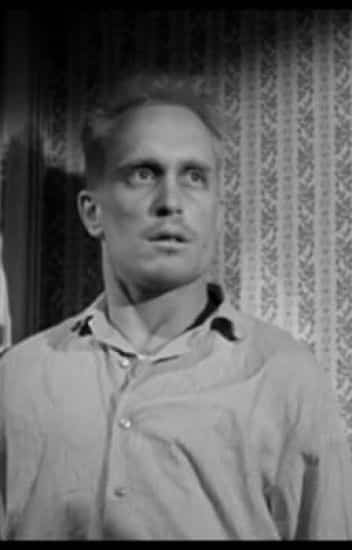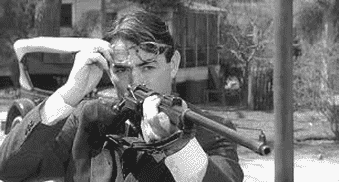
In the novel, To Kill A Mockingbird, the author, Harper Lee, writes this book in the point of a six-year-old girl, Scout, who lives in a society of racism. Not only Scout, but the whole town faces many troubles as the book goes on. One significant part of the book is a case in court about an African American man who was falsely accused and was going to jail for abusing and taking advantage of a young woman.
Aside from this, with her brother Jem and friend Dill, Scout is wrapped up in many situations that occur at a house in town. With many events, Harper Lee uses symbolism to tackle and leave deeper meanings to numerous issues.
By way of example, a specific house in the town, Boo Radley’s house, has a great impact on characters and happenings. Boo Radley is a young man in town that stays locked up in his house. Most people in town had assumed he was an immoral person. This was mostly because of the well-known story of him piercing his father in the leg with scissors.
Although this was never proven to have taken place as claimed, the town feared him and believed he was deranged. The narrator, Scout, had believed these presumptions and feared Boo Radley and the Radley house. Many in town agreed that this house stood out from the others as it was very different, “The shutters and doors of the Radley house were closed on Sundays, another thing alien to Maycomb’s ways: closed doors meant illness and cold weather only” (Lee, 9).
However, as the book went on, Scout realizes that Boo Radley and the house are misjudged. She is no longer afraid to pass it on the way to school and does not fear Boo Radley will come after her. Scout ends up feeling sorry that she had misjudged it so badly, but is more open to learning about someone or something before deciding what she thinks of them.
Equally important, the “Mad Dog” named Tim Johnson is a significant piece of symbolism in this novel. Scout and Jem were outside when they saw Tim Johnson and went inside to tell Calpurnia. She had then taken a look at the dog and called Atticus and the sheriff to warn the rest of the town. Since the dog had rabies and was a potential threat to those in the neighborhood, everyone was notified and locked themselves inside.
Once Atticus and the sheriff, Heck Tate, arrived, they shot the dog and made sure everyone was safe. Tom Robinson, or the “Mad Dog,” represents the whole society of Maycomb. The dog itself is the segregation that is spreading around that is feared by society. Atticus is then called on to kill the dog, as he was one to step up and try to make the racial discrimination in Maycomb less of a problem.
He had done this in court with Tom Robinson’s case, as he had defended an African American man. Just after the dog had died, Atticus said to Jem, “Come here…Don’t you go near that dog, you understand? Don’t go near him, he’s just as dangerous dead as alive” (Lee, 128). This is bringing the symbolism to a point where it is saying that the racism in Maycomb with still be present in Maycomb after the court case with Tom Robinson. Even though it can make a difference, segregation will never fall out completely and is always there.

Furthermore, the entire book expresses the theme of it being a sin to kill a mockingbird. Atticus had always said this to his children and this was explained more in chapter ten. As Scout and Jem wanted to use their air-rifles that Atticus had given them.
Although he wouldn’t teach them to shoot, he said to “Shoot all the bluejays you want” (Lee, 119) and not any mockingbirds. Not understanding why Scout had asked their neighbor, Miss Maudie. She told Scout, “Your father’s right…Mockingbirds don’t do one thing but make music for us to enjoy. They don’t eat up people’s gardens, don’t nest in corncribs, they don’t do one thing but sing their hearts out for us. That’s why it’s a sin to kill a mockingbird” (Lee, 119).
As this idea is expressed along with the whole book, it is not only referring to mockingbirds. The “mockingbirds” in this book could be Tom Robinson and Boo Radley. For instance, Tom Robinson had been accused of a crime he did not do. He represents a mockingbird because of his innocence and the fact that ruling him guilty would be a sin.
Similarly, Boo Radley had a sort of reputation in town, as people believed he was unhinged. This judgment was not true in any sort as he ended up saving Scout and Jem from an attack by Bob Ewell. In the end, the characters who symbolize the mockingbirds are offenseless and were misunderstood.
Generally speaking, Harper Lee explains the overall book’s meaning through symbolism. These symbols easily guide the reader towards finding the message of the book and ideas that are not clearly stated. Besides Boo Radley’s house, Tim Johnson, and the mockingbird, there are many more symbols used throughout the novel.
All of these can lead the reader to believe that it is important to fully understand something before assuming things, like the Radley house or Tom Johnson. As Atticus had told Scout, “You never really understand a person until you consider things from his point of view…until you climb into his skin and walk around in it” (Lee, 39)
